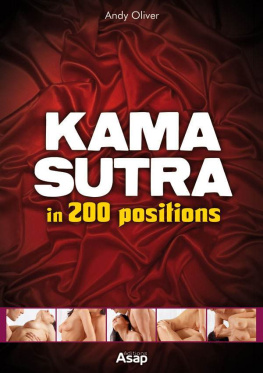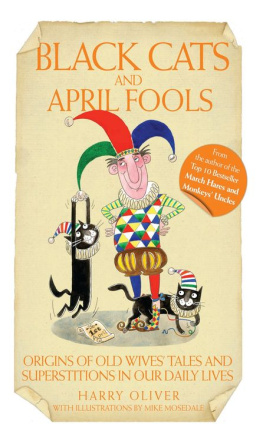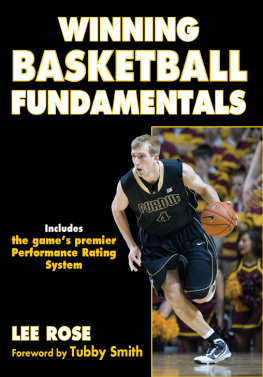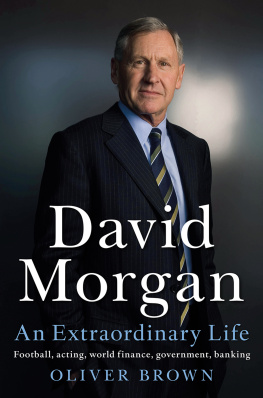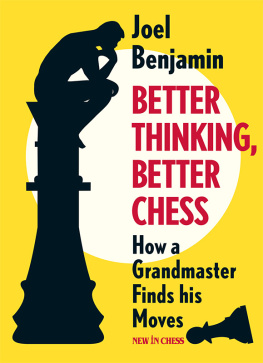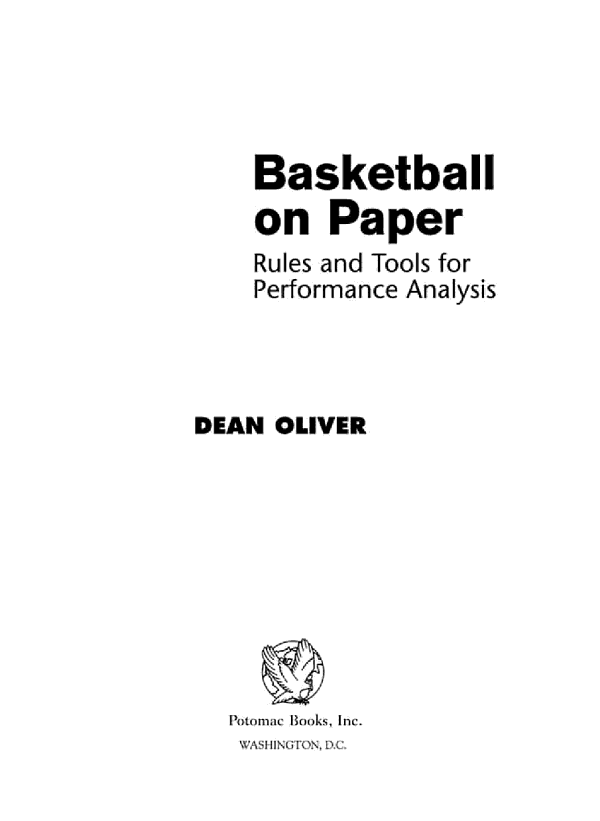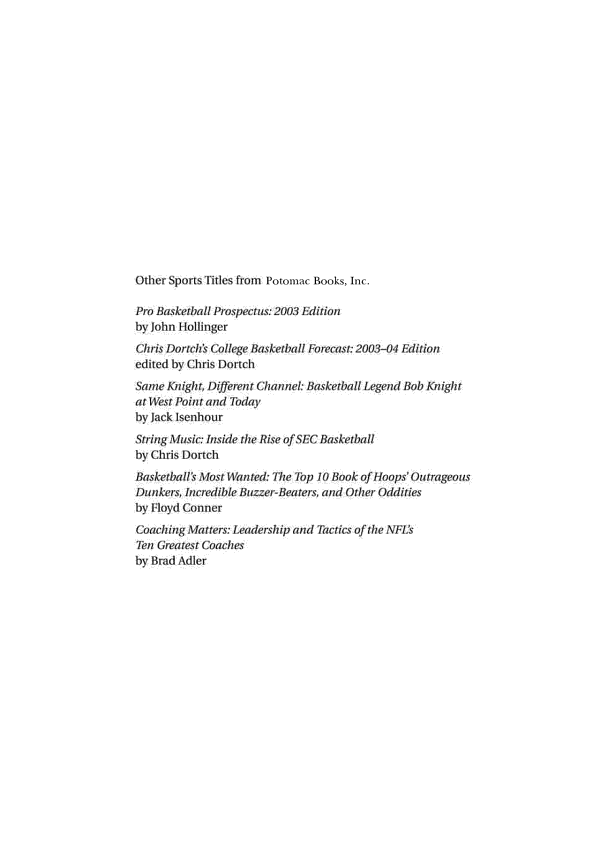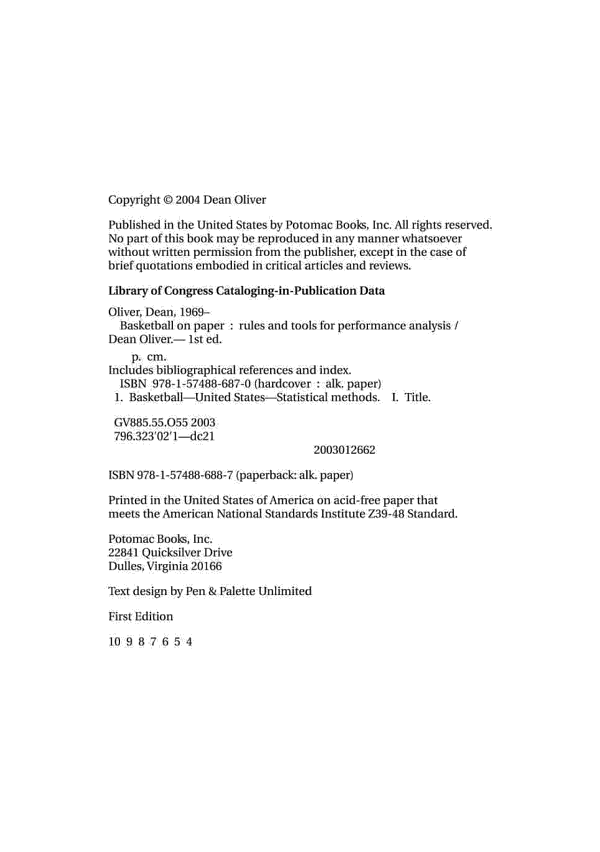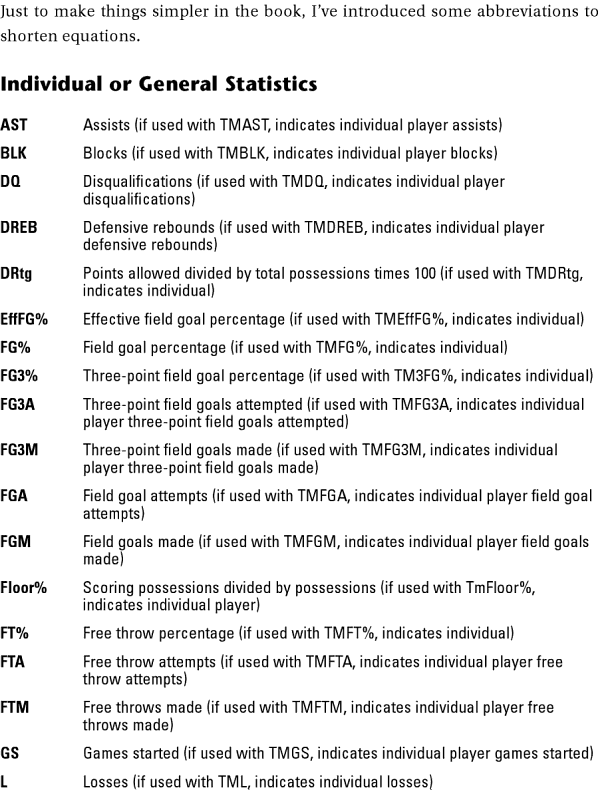on Paper
Rules and Tools for
Performance Analysis
DEAN OLIVER
Potomac Books, Inc.
WASHINGTON. D.C.
To Coach Gene Victor and my friends from Caltech. We made a really good team.
Acknowledgments
Thanks to Dad for buying me the first Bill James Baseball Abstract in 1984. Thanks to Bill James for writing that Baseball Abstract and all the other books that inspired so much, then releasing the methods to those of us who follow. Thanks to Dad for buying me Defensive Basketball. Thanks to Frank McGuire, Dean Smith, and Clair Bee for their contributions to Defensive Basketball and for helping to make coaching such an honorable profession.
Thanks to Coach Gene Victor for making me an assistant coach, valuing my opinion as a precocious college student, and setting me up as a scout with Bertka Views. Thanks to Bill and Solveig Bertka for their guidance and trust while I worked for Bertka Views. Thanks to the Seattle Supersonics organization and to the Charlotte Sting organization for the opportunity to see their needs and for boosting my stock with publishers. Thanks in particular to Yvan Kelly and John Maxwell for being friends on the inside.
I owe an immense debt of gratitude to Doug Steele and Dean Lavergne for providing me with electronic versions of the data used here. They made my life so much easier by doing quality work over a long period of time. Im sure I owe their wives/girlfriends a few trips to bed-and-breakfasts to make up for the time theyve allowed their significant others to spend helping me out.
Thanks to Mohan Sandhu and Jessica Donovan for reading draft chapters and providing comments.
Thanks to Clay Kallam of the Full Court Press (www.fullcourt.com) for numerous thought-provoking conversations.
Thanks to Swarna Ghanta for initially and perhaps unintentionally inspiring me to write at all.
I owe an immense debt of gratitude to my very good friend Dave Carta for providing me shelter, wireless Internet, comments on chapters, and a good atmosphere for getting this done. I really cant say thank you enough.
Jefferson Sweeneys complimentary videotape helped out on one of those chapters.
David Berri provided me with inside information on sports economics that helps to make my work a bit deeper. Im glad the Internet introduced us.
Thanks to ENVIRON International for giving me the time off to make it work.
Thanks to Ross Russell, who designed the cover, and to the basketball that gave its life for that cover.
The Association for Professional Basketball Research, started and stewarded by Robert Bradley, has also been a very valuable resource in developing this book. Bradleys Compendium of Pro Basketball is an under-recognized source of a vast amount of NBA information.
Mike Tamada has been a valuable technical reviewer of my work, raising questions about my methods and pointing me in the direction of other people doing related work. Bob Chaikin has also provided useful insight through his years of watching tape and developing his own unique way of evaluating basketball. Thanks to Stuart McKibbin for his insightful research on the Lakers. Thanks also to Nic Antoine for spreading the word and hooking me up with Pete Palmer, whose advice was valuable and whose insight on baseball was used several times in this book. Thanks to Pete for then hooking me up with John Thorn, who, along with Sean Lahman, was integral in putting me in touch with my publisher.
I really appreciate the help of all of you. If no one but you smiles and no one but you thinks a little more upon reading this, I will still be happy. My publisher may not be, but I will.
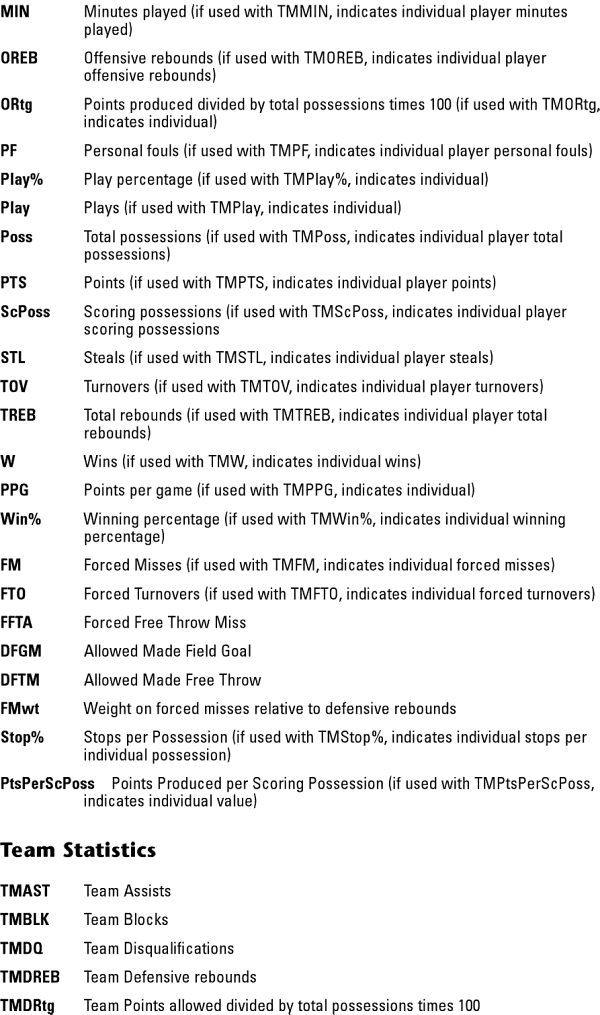

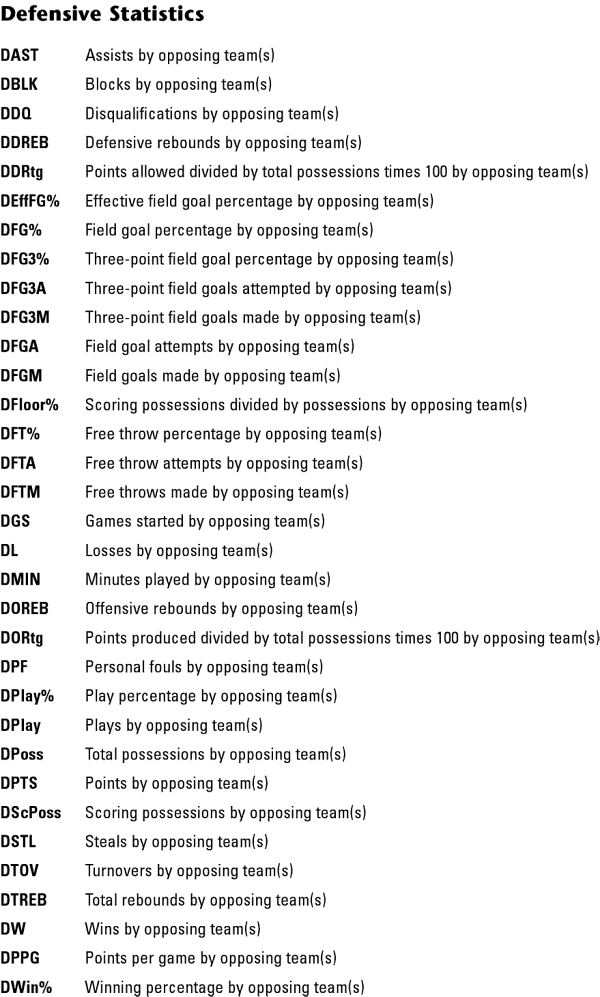
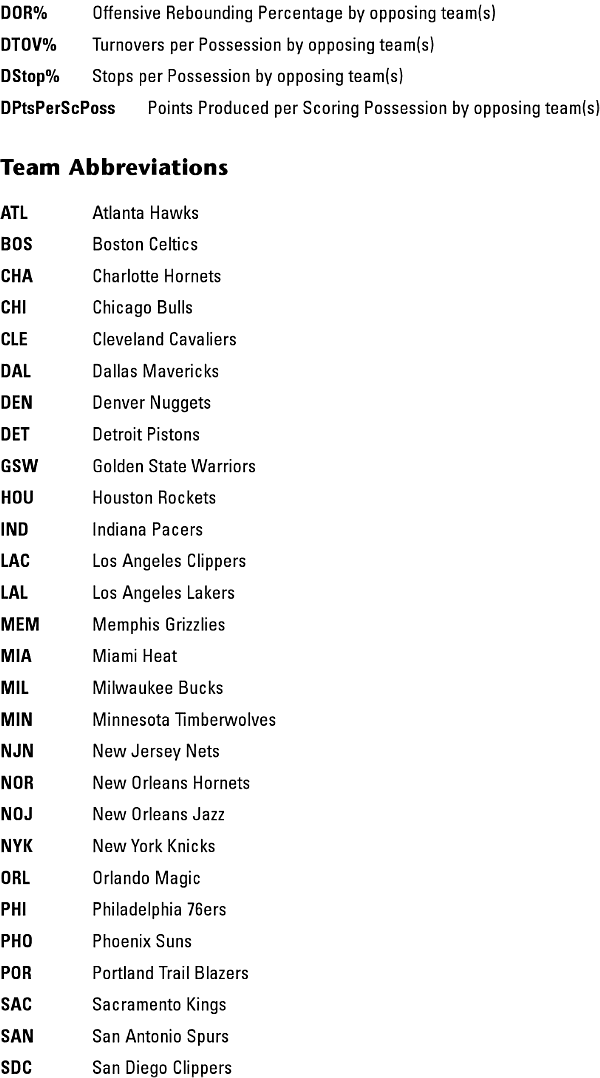
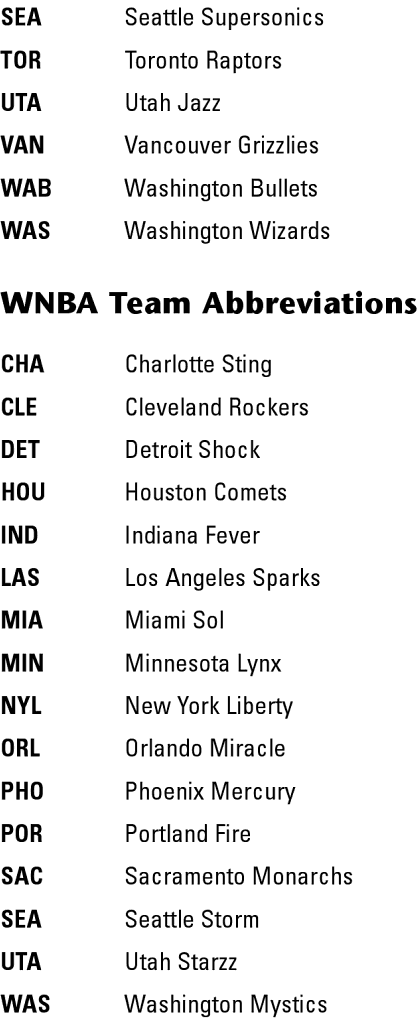
Chapter 1
How to Read This Book
One of the most common social introductions is So what kind of work do you do? We define ourselves so much by our jobs that the first thing we want to know about the stranger next to us is what job defines them. But what is it that a thirty-second summary of a job can tell the socially correct stranger? Arent we told by movies like Its a Wonderful Life and City Slickers that its our life outside of work that should define us? Wouldnt it be better to ask someone about his wife and kids or about, as Jack Palance suggested with that single intimidating finger raised, the one thing that is most important to him?
Thats not why youre here, though, deciding whether to buy this book. You do want the thirty-second summary of my job. Rather than answering with a generic summary, I want to specifically address the different possible readers of the book. Each audience is likely to look for different things, and my suggestions to them on how to read the book can provide a decent overview without stealing the thunder of the chapters.
Coaches, Scouts, and Players
Lets start with what you should not expect in this book. This book does not introduce new offensive structures or defensive schemes. It does not diagram specific plays, describe training regimens, provide shooting drills, or reveal ways to improve your vertical leap. On the bookshelves of your local library or bookstore, you can find several books that cover these topics.
Instead, this book was originally conceived as an aid to coaches in a more general manner. The most obvious specific contribution is through several statistical measures. The book provides formulas for evaluating a team and the contributions of individuals to team success. The formulas arose out of a desire to better describe the goals and structure of the game. For instance,
What goals does a team have? To win now? To win later? To win this game? To win a title?
In what ways does teammate interaction matter? Is teamwork adequately represented in existing stats? What purpose do plays and different offensive sets serve in terms of enhancing teamwork?
Does defense win championships? Does rebounding win titles? What is the value of a time-out?
Are there good rules of thumb for applying different game strategies?





